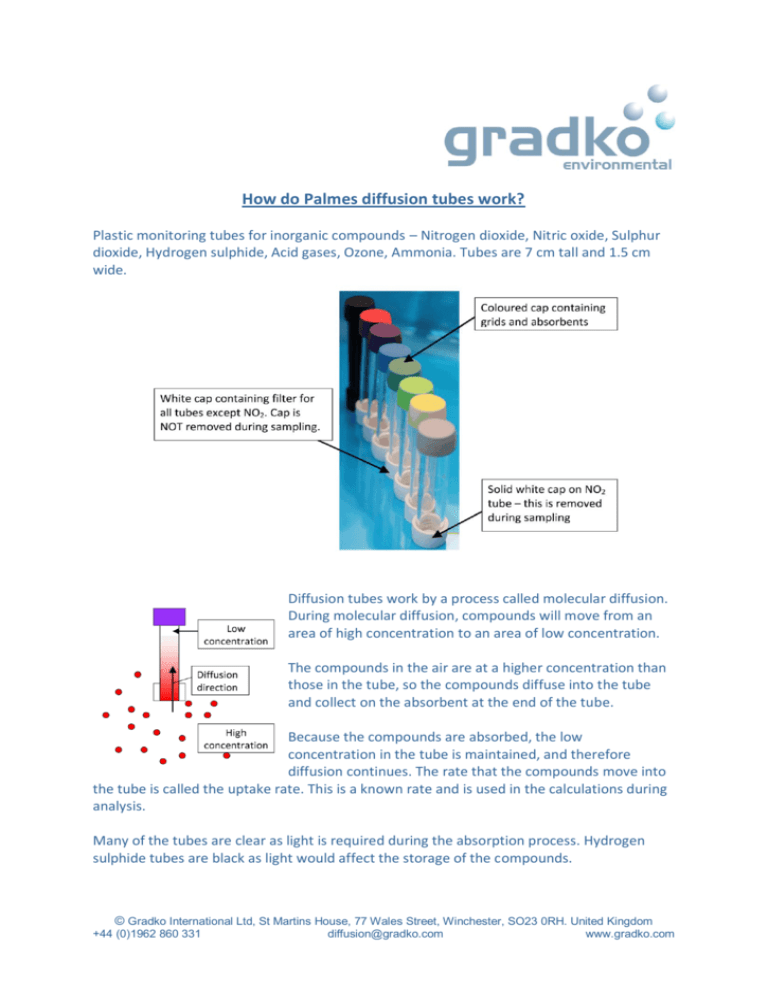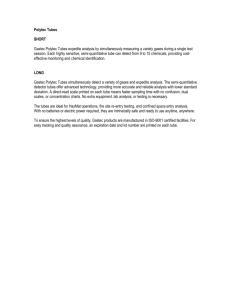How do diffusion tubes work
advertisement

How do Palmes diffusion tubes work? Plastic monitoring tubes for inorganic compounds – Nitrogen dioxide, Nitric oxide, Sulphur dioxide, Hydrogen sulphide, Acid gases, Ozone, Ammonia. Tubes are 7 cm tall and 1.5 cm wide. Diffusion tubes work by a process called molecular diffusion. During molecular diffusion, compounds will move from an area of high concentration to an area of low concentration. The compounds in the air are at a higher concentration than those in the tube, so the compounds diffuse into the tube and collect on the absorbent at the end of the tube. Because the compounds are absorbed, the low concentration in the tube is maintained, and therefore diffusion continues. The rate that the compounds move into the tube is called the uptake rate. This is a known rate and is used in the calculations during analysis. Many of the tubes are clear as light is required during the absorption process. Hydrogen sulphide tubes are black as light would affect the storage of the compounds. © Gradko International Ltd, St Martins House, 77 Wales Street, Winchester, SO23 0RH. United Kingdom +44 (0)1962 860 331 diffusion@gradko.com www.gradko.com Using diffusion tubes Benefits of passive monitoring: No power supply required Inexpensive Can be used over a wide area Long-term monitoring Diffusion tubes are designed for long-term monitoring so that a sufficient concentration of compounds is absorbed on to the tubes to be detected during the analysis. The tube should be placed in the required monitoring location and left there for between 2 and 4 weeks. Once the sampling period is over, the tubes are sealed and returned to the laboratory for analysis. Various analysis techniques are used for the different diffusion tubes. The lab determines the concentration of compounds on the tube. This is then used in a calculation with the uptake rate to calculate the average concentration of compounds that were present in the air over the monitoring period. The results are reported in parts per billion (ppb) and micrograms per metre cubed (ugm-3) to allow comparison with health guideline levels. Reports are emailed to the customer within 10 working days of receipt of the samples. Technical tips An acid gases tube can be used to measure six different gases simultaneously. Always position the tube vertically, with the open end or the filter pointing downwards. Spacers should be used to position the tube away from the fixing surface. © Gradko International Ltd, St Martins House, 77 Wales Street, Winchester, SO23 0RH. United Kingdom +44 (0)1962 860 331 diffusion@gradko.com www.gradko.com



